Properties of Cementitious Materials Utilizing Seashells as Aggregate or Cement: Prospects and Challenges
Abstract
:1. Introduction
2. Review Methodology
- (1)
- What are the differences in the physical and chemical properties of waste seashells as aggregate and natural aggregate?
- (2)
- Why is there an urgent need to investigate the possibility of using waste seashells in concrete or mortar?
- (3)
- What are the fresh and hardened properties of seashell concrete or mortar?
- (4)
- How does seashell concrete or mortar differ from ordinary concrete in terms of durability?
- (5)
- What is the contribution of the use of waste seashells in concrete to sustainable development?
3. Properties of Seashells
3.1. Physical Properties
3.2. Chemical Composition
3.3. Microstructure
4. Preparation of Seashell Mortar or Concrete
4.1. Treatment of Waste Seashell
4.2. Preparation of Specimens
4.3. Other Component Materials
5. Physical Properties of Concrete and Mortar Containing Seashells
5.1. Workability
5.2. Setting Time
5.3. Density
5.4. Air Content
6. Mechanical Properties of Concrete and Mortar Containing Seashells
6.1. Compressive Strength
6.2. Splitting Tensile Strength and Flexural Strength
6.3. Elastic Modulus
7. Durability Properties of Concrete and Mortar Containing Seashells
7.1. Shrinkage and Weight Loss
7.2. Porosity and Absorption
7.3. Water Permeability
7.4. Chemical Attack
7.5. Freeze–Thaw Resistance
8. Assessment of Sustainability and Economy
9. Conclusions
- The main component of seashells is calcium carbonate, so it can be considered an inert material and added to concrete or mortar in aggregate or powder form. The specific gravity of seashell aggregate is usually lower than that of natural aggregates while the water absorption is higher. Since seashells come mainly from waste, which usually contain many impurities, proper treatment should be carried out before reused. In general, the treatment of waste seashells involves cleaning, drying, and crushing to remove significant amounts of chlorides, sulfates, and organic matter. Some researchers also perform additional calcination treatment.
- Studies have shown that in most cases, the incorporation of seashell aggregate will adversely affect the workability of concrete and mortar, which is mainly due to the high porosity and water absorption, angular shape, and rough surface of seashells. Similarly, the addition of seashells also prolongs the setting time and reduces the density of concrete and mortar. In terms of the mechanical properties of concrete and mortar, the use of shells as a substitute for aggregate reduces the mechanical properties to a certain extent. Although the strength of seashell concrete is satisfied, the lower limit for structural purposes. But given the difficulty of meeting the standards for its workability and chloride ion content, there still exists uncertainty about the use for structural purposes from the point of engineering safety. Consequently, shell concrete can still only be used for non-structural purposes. With the addition of seashell aggregates, the resistance to a chemical attack generally decreases and the shrinkage properties increase. However, there is still a lack of agreement on certain aspects of durability such as water permeability, freeze–thaw resistance, and porosity which depends largely on the particle size of the seashell aggregates, the particular method of treatment, the addition of other SCMs and other factors in their tests. Therefore, there is an optimum value for the amount of seashells. According to the results of most researchers, the replacement rate of seashell as aggregate should generally be limited to less than 20%.
- There is insufficient literature to summarize the effects of seashell powder as cement replacement on the various properties of concrete and mortar. In general, the addition of seashell will reduce the workability of concrete or mortar because it increases the water demand. Similarly, the setting time of the concrete or mortar increases and the density decreases slightly. Partial replacement of cement with seashell reduces the compressive strength of the concrete or mortar, but has a beneficial effect on splitting tensile strength and flexural strength at low levels of replacement. Similarly, concrete and mortar with using seashells as cement can only be used for non-structural purposes. Conversely, the addition of seashell will reduce the shrinkage of the concrete or mortar. As with seashell as aggregates, there is still a lack of consistent conclusions on other durability aspects. Therefore, the replacement rate of seashell as cement should be limited to about 5%.
- Overall, the use of seashells in concrete and mortar has good potential. Recycling waste seashells can not only reduce the environmental impact of such waste produced by shellfish, but also decrease the dependence on raw materials in the construction industry and promote its sustainable development.
10. Directions for Future Investigations
- Most of the current trials were carried out in the laboratory and had limited trial time, whereas long-term mechanical and durability field trials are more informative for practical engineering applications. In future studies, longer trials are needed to be conducted to evaluate durability more precisely.
- Current research lacks the properties of seashell concrete and mortar under cyclic loading. Therefore, in order to make a more comprehensive assessment of their suitability in structures, future research needs to focus on the properties under cyclic loading, such as dynamic modulus of elasticity, and fatigue resistance.
- For seashell concrete, the research on durability is very important. Although some conclusions have been available in the literature on the durability of seashell concrete, it often faces more complex environmental conditions when it is applied in practical engineering. There is a lack of research in previous studies on the fire resistance, high-temperature resistance, thermal insulation, sound absorption, carbonization, etc. of seashell concrete, so further research in these areas of durability is needed.
- The research on chemical resistance of seashell concrete is only limited to a single resistance to chloride or sulfate corrosion. However, the results of previous research in this area do not guarantee its use in practical structures, as the actual marine conditions faced in coastal areas are more complex. Thus, it is necessary to research the properties of seashell concrete under the combined erosion of chloride and sulfate.
- The current research is still at the stage of plain concrete. The interaction between seashell concrete and rebars in bond-slip and other aspects are still unclear, so current research cannot guarantee that seashell concrete can be used in reinforced concrete members to extend its further application. Therefore, future research needs to focus on the performance of reinforced concrete beam and column containing seashells to further increase the possibility of their engineering applications.
- There are few ecological and economic feasibility assessments of seashell concrete and mortars to determine the feasibility of commercial-scale implementation of the use of seashells to replace aggregates in mass concrete. Therefore, research needs to pay more attention to the eco-efficiency and cost-efficiency of seashell concrete.
Author Contributions
Funding
Institutional Review Board Statement
Informed Consent Statement
Data Availability Statement
Conflicts of Interest
References
- Eziefula, U.G.; Ezeh, J.C.; Eziefula, B.I. Properties of seashell aggregate concrete: A review. Constr. Build. Mater. 2018, 192, 287–300. [Google Scholar] [CrossRef]
- Aprianti, E.; Shafigh, P.; Bahri, S.; Farahani, J.N. Supplementary cementitious materials origin from agricultural wastes—A review. Construct. Build. Mater. 2015, 74, 176–187. [Google Scholar] [CrossRef]
- Meyer, C. The greening of the concrete industry. Cement Concr. Compos. 2009, 31, 601–605. [Google Scholar] [CrossRef]
- Mehta, P.K.; Monteiro, P. Concrete: Microstructure, Properties, and Materials, 3rd ed.; McGraw-Hill: New York, NY, USA, 2006. [Google Scholar]
- Aslam, M.; Shafigh, P.; Jumaat, M.Z. Oil-palm by-products as lightweight aggregate in concrete mixture: A review. J. Clean. Prod. 2016, 126, 56–73. [Google Scholar] [CrossRef]
- Shafigh, P.; Jumaat, M.Z.; Mahmud, H.B.; Alengaram, U.J. Oil palm shell lightweight concrete containing high volume ground granulated blast furnace slag. Constr. Build. Mater. 2013, 40, 231–238. [Google Scholar] [CrossRef]
- Imbabi, M.S.; Carrigan, C.; McKenna, S. Trends and developments in green cement and concrete technology. Int. J. Sustain. Built Environ. 2012, 1, 194–216. [Google Scholar] [CrossRef]
- Anya, C.U. Models for Predicting the Structural Characteristics of Sand-Quarry Dust Blocks; University of Nigeria: Nsukka, Nigeria, 2015. [Google Scholar]
- Mo, K.H.; Alengaram, U.J.; Jumaat, M.Z.; Lee, S.; Goh, W.; Yuen, C.H. Recycling of seashell waste in concrete: A review. Constr. Build. Mater. 2018, 162, 751–764. [Google Scholar] [CrossRef]
- Ling, T.; Poon, C. Stress-strain behavior of fire exposed self-compacting glass concrete. Fire Mater. 2013, 37, 297–310. [Google Scholar] [CrossRef]
- Thomas, B.S.; Gupta, R.C. A comprehensive review on the applications of waste tire rubber in cement concrete. Renew. Sustain. Energy Rev. 2016, 54, 1323–1333. [Google Scholar] [CrossRef]
- Wang, A.; Lyu, B.; Zhang, Z.; Liu, K.; Xu, H.; Sun, D. The development of coral concretes and their upgrading technologies: A critical review. Constr. Build. Mater. 2018, 187, 1004–1019. [Google Scholar] [CrossRef]
- Barros, M.C.; Bello, P.M.; Bao, M.; Torrado, J.J. From waste to commodity: Transforming shells into high purity calcium carbonate. J. Clean. Prod. 2009, 17, 400–407. [Google Scholar] [CrossRef]
- Mo, K.H.; Alengaram, U.J.; Jumaat, M.Z.; Yap, S.P.; Lee, S.C. Green concrete partially comprised of farming waste residues: A review. J. Clean. Prod. 2016, 117, 122–138. [Google Scholar] [CrossRef]
- Kwon, H.B.; Lee, C.W.; Jun, B.S.; Yun, J.D.; Weon, S.Y.; Koopman, B. Recycling waste oyster shells for eutrophication control. Resour. Conserv. Recycl. 2004, 41, 75–82. [Google Scholar] [CrossRef]
- Young, H.L.; Islam, S.M.A.; Sun, J. Composted oyster shell as lime fertilizer is more effective than fresh oyster shell. Biosci. Biotechnol. Biochem. 2010, 74, 1517–1521. [Google Scholar]
- Ok, Y.S.; Oh, S.E.; Ahmad, M.; Hyun, S.; Kim, K.R.; Moon, D.H.; Lee, S.S.; Lim, K.J.; Jeon, W.T.; Yang, J.E. Effects of natural and calcined oyster shells on Cd and Pb immobilization in contaminated soils. Environ. Earth Sci. 2010, 61, 1301–1308. [Google Scholar] [CrossRef]
- Ahmed, S.A.; Gibriel, A.A.Y.; Abdellatif, A.K.; Ebied, H.M. Evaluation of food products fortified with oyster shell for the prevention and treatment of osteoporosis. J. Food Sci. Tech. 2015, 52, 6816–6820. [Google Scholar] [CrossRef] [PubMed]
- Wang, T.; Xiao, D.; Huang, C.; Hsieh, Y.; Tan, C.; Wang, C. CO2 uptake performance and life cycle assessment of CaO-based sorbents prepared from waste oyster shells blended with PMMA nanosphere scaffolds. J. Hazard. Mater. 2014, 270, 92–101. [Google Scholar] [CrossRef]
- Martínez-García, C.; González-Fonteboa, B.; Martínez-Abella, F.; Carro-López, D. Performance of mussel shell as aggregate in plain concrete. Constr. Build. Mater. 2017, 139, 570–583. [Google Scholar] [CrossRef]
- Olivia, M.; Oktaviani, R.; Ismeddiyanto. Properties of concrete containing ground waste cockle and clam seashells. Proc. Eng. 2017, 171, 658–663. [Google Scholar] [CrossRef]
- Nguyen, D.H.; Boutouil, M.; Sebaibi, N.; Baraud, F.; Leleyter, L. Durability of pervious concrete using crushed seashells. Constr. Build. Mater. 2017, 135, 137–150. [Google Scholar] [CrossRef]
- Eo, S.; Yi, S. Effect of oyster shell as an aggregate replacement on the characteristics of concrete. Mag. Concr. Res. 2015, 67, 833–842. [Google Scholar] [CrossRef]
- Khankhaje, E.; Salim, M.R.; Mirza, J.; Salmiati Hussin, M.W.; Khan, R.; Rafieizonooz, M. Properties of quiet pervious concrete containing oil palm kernel shell and cockleshell. Appl. Acoust. 2017, 122, 113–120. [Google Scholar] [CrossRef]
- Lertwattanaruk, P.; Makul, N.; Siripattarapravat, C. Utilization of ground waste seashells in cement mortars for masonry and plastering. J. Environ. Manag. 2012, 111, 133–141. [Google Scholar] [CrossRef]
- Abinaya, S.; Venkatesh, S.P. An effect on oyster shell powder’s mechanical properties in self compacting concrete. Int. J. Innov. Res. Sci. Eng. Technol. 2016, 5, 11785–11789. [Google Scholar]
- Felipe-Sese, M.; Eliche-Quesada, D.; Corpas-Iglesias, F.A. The use of solid residues derived from different industrial activities to obtain calcium silicates for use as insulating construction materials. Ceram. Int. 2011, 37, 3019–3028. [Google Scholar] [CrossRef]
- Wang, J.; Liu, E.; Li, L. Characterization on the recycling of waste seashells with Portland cement towards sustainable cementitious materials. J. Clean. Prod. 2019, 220, 235–252. [Google Scholar] [CrossRef]
- Martínez-García, C.; González-Fonteboa, B.; Carro-López, D.; Martínez-Abella, F. Impact of mussel shell aggregates on air lime mortars. Pore structure and carbonation. J. Clean. Prod. 2019, 215, 650–668. [Google Scholar] [CrossRef]
- Martínez-García, C.; González-Fonteboa, B.; Carro-López, D.; Martínez-Abella, F. Design and properties of cement coating with mussel shell fine aggregate. Constr. Build. Mater. 2019, 215, 494–507. [Google Scholar] [CrossRef]
- Maglad, A.M.; Mydin, M.A.O.; Datta, S.D.; Tayeh, B.A. Assessing the mechanical, durability, thermal and microstructural properties of sea shell ash based lightweight foamed concrete. Constr. Build. Mater. 2023, 402, 133018. [Google Scholar] [CrossRef]
- Chen, D.; Zhang, P.; Pan, T.; Liao, Y.; Zhao, H. Evaluation of the eco-friendly crushed waste oyster shell mortars containing supplementary cementitious materials. J. Clean. Prod. 2019, 237, 117811. [Google Scholar] [CrossRef]
- Chen, D.; Pan, T.; Yu, X.; Liao, Y.; Zhao, H. Properties of Hardened Mortars Containing Crushed Waste Oyster Shells. Environ. Eng. Sci. 2019, 36, 1079–1088. [Google Scholar] [CrossRef]
- Oh, S.E.; Chung, S.Y.; Kim, K.; Han, S.H. Comparative analysis of the effects of waste shell aggregates on the material properties of cement mortars. Constr. Build. Mater. 2024, 412, 134887. [Google Scholar] [CrossRef]
- Artismo, T.V.; de Oliveira Braga, F.; Rocha, C.A.A. Physical-mechanical behavior of workable mortars with Perna perna mussel shell as fine aggregate. Constr. Build. Mater. 2024, 418, 135411. [Google Scholar] [CrossRef]
- Ibrahim, A.S.; Ul-Islam, M.; Al Noobi, A.S.H.; Al Abri, S.H.M.; Al Salmi, A.M.S.M. Optimize mechanical properties of Oman cement using bio waste of sea shell; EasyChair: Stockport, UK, 2020. [Google Scholar]
- Chiou, I.; Chen, C.; Li, Y. Using oyster-shell foamed bricks to neutralize the acidity of recycled rainwater. Constr. Build. Mater. 2014, 64, 480–487. [Google Scholar] [CrossRef]
- Liao, Y.; Li, W.; Da, B.; Meng, Y.; Chen, D. Research on properties of waste oyster shell mortar: The effect of calcination temperature of oyster shell powder. Case Stud. Constr. Mater. 2023, 19, e02639. [Google Scholar] [CrossRef]
- Deepa, K.; Udayabanu, T.; Haricharan, R. Characteristics study of concrete strength using periwinkle seashell as cement partial replacement. Mater. Today Proc. 2023, in press. [Google Scholar] [CrossRef]
- Liao, Y.; Fan, J.; Li, R.; Da, B.; Chen, D.; Zhang, Y. Influence of the usage of waste oyster shell powder on mechanical properties and durability of mortar. Adv. Powder Technol. 2022, 33, 103503. [Google Scholar] [CrossRef]
- Cuadrado-Rica, H.; Sebaibi, N.; Boutouil, M.; Boudart, B. Properties of ordinary concretes incorporating crushed queen scallop shells. Mater. Struct. 2016, 49, 1805–1816. [Google Scholar] [CrossRef]
- Kong, J.; Cong, G.; Ni, S.; Sun, J.; Guo, C.; Chen, M.; Quan, H. Recycling of waste oyster shell and recycled aggregate in the porous ecological concrete used for artificial reefs. Constr. Build. Mater. 2022, 323, 126447. [Google Scholar] [CrossRef]
- Nguyen, D.H.; Boutouil, M.; Sebaibi, N.; Leleyter, L.; Baraud, F. Valorization of seashell by-products in pervious concrete pavers. Constr. Build. Mater. 2013, 49, 151–160. [Google Scholar] [CrossRef]
- Luo, K.; Zhang, M.; Jiang, Q.; Wang, S.; Zhuo, X. Evaluation of using oyster shell as a complete replacement for aggregate to make eco-friendly concrete. J. Build. Eng. 2024, 84, 108587. [Google Scholar] [CrossRef]
- Ruslan, H.N.; Muthusamy, K.; Jaafar, M.F.M.; Mohamad, N.; Jamaludin, N.F.A. Compressive strength and fire resistance of mortar containing crushed cockle shell as fine aggregate replacement. Mater. Today Proc. 2023, in press. [Google Scholar]
- Liao, Y.; Wang, X.; Kong, D.; Da, B.; Chen, D. Experiment research on effect of oyster shell particle size on mortar transmission properties. Constr. Build. Mater. 2023, 375, 131012. [Google Scholar] [CrossRef]
- Liu, R.; Chen, D.; Cai, X.; Deng, Z.; Liao, Y. Hardened properties of mortar mixtures containing pre-treated waste oyster shells. J. Clean. Prod. 2020, 266, 121729. [Google Scholar] [CrossRef]
- Moher, D.; Liberati, A.; Tetzlaff, J.; Altman, D.G.; PRISMA Group. Preferred reporting items for systematic reviews and meta-analyses: The PRISMA statement. Ann. Intern. Med. 2009, 151, 264–269. [Google Scholar] [CrossRef] [PubMed]
- Yang, E.; Yi, S.; Leem, Y. Effect of oyster shell substituted for fine aggregate on concrete characteristics: Part I. Fundamental properties. Cem. Concr. Res. 2005, 35, 2175–2182. [Google Scholar] [CrossRef]
- Kuo, W.; Wang, H.; Shu, C.; Su, D. Engineering properties of controlled low-strength materials containing waste oyster shells. Constr. Build. Mater. 2013, 46, 128–133. [Google Scholar] [CrossRef]
- Islam, M.R.; Satoru, I.; Masayoshi, Y. Surface heat reduction of asphalt concrete by top filling with mortar prepared by oyster shell aggregate and ground granulated blast furnace slag and their strength in different curing condition. IDRE J. 2015, 296, 1–7. [Google Scholar]
- Neville, A.M.; Brooks, J.J. Concrete Technology, 2nd ed.; Pearson Education: Essex, UK, 2010. [Google Scholar]
- Falade, F. An investigation of periwinkle shells as coarse aggregate in concrete. Build. Environ. 1995, 30, 573–577. [Google Scholar] [CrossRef]
- Zhong, B.; Zhou, Q.; Chan, C.; Yu, Y. Structure and property characterization of oyster shell cementing material. Chin. J. Struct. Chem. 2012, 31, 85–92. [Google Scholar]
- Ez-zaki, H.; Diouri, A.; Kamali-Bernard, S.; Sassi, O. Composite cement mortars based on marine sediments and oyster shell powder. Mater. Constr. 2016, 66, e080. [Google Scholar] [CrossRef]
- Figueroa, J.; Fuentealba, M.; Ponce, R.; Zúñiga, R. Effects on the Compressive Strength and Thermal Conductivity of Mass Concrete by the Replacement of Fine Aggregate by Mussel Shell Particulate. IOP Conf. Ser. Earth Environ. Sci. 2020, 503, 012070. [Google Scholar] [CrossRef]
- Jung, J.; Shon, B.; Yoo, K.; Oh, K. Physicochemical characteristics of waste sea shells for acid gas cleaning absorbent. Korean J. Chem. Eng. 2000, 17, 585–592. [Google Scholar] [CrossRef]
- Varhen, C.; Carrillo, S.; Ruiz, G. Experimental investigation of Peruvian scallop used as fine aggregate in concrete. Constr. Build. Mater. 2017, 136, 533–540. [Google Scholar] [CrossRef]
- Olivia, M.; Mifshella, A.A.; Darmayanti, L. Mechanical properties of seashell concrete. Proc. Eng. 2015, 125, 760–764. [Google Scholar]
- Etuk, B.R.; Etuk, I.F.; Asuquo, L.O. Feasibility of using sea shells ash as admixtures for concrete. J. Environ. Sci. Eng. 2012, A1, 121–127. [Google Scholar]
- Umoh, A.A.; Ujene, A.O. Improving the strength performance of high volume periwinkle shell ash blended cement concrete with sodium nitrate as accelerator. J. Civ. Eng. Sci. Technol. 2015, 6, 18–22. [Google Scholar] [CrossRef]
- Zaid, S.T.; Ghorpade, V.G. Experimental investigation of snail shell ash (SSA) as partial repalacement of ordinary portland cement in concrete. Int. J. Eng. Res. Technol. 2014, 3, 1049–1053. [Google Scholar]
- Soltanzadeh, F.; Emam-Jomeh, M.; Edalat-Behbahani, A.; Soltan-Zadeh, Z. Development and characterization of blended cements containing seashell powder. Constr. Build. Mater. 2018, 161, 292–304. [Google Scholar] [CrossRef]
- Martínez-García, C.; González-Fonteboa, B.; Carro-López, D.; Martínez-Abella, F. Effects of mussel shell aggregates on hygric behavior of air lime mortar at different ages. Constr. Build. Mater. 2020, 252, 119113. [Google Scholar] [CrossRef]
- Yao, Z.; Xia, M.; Li, H.; Chen, T.; Ye, Y.; Zheng, H. Bivalve shell: Not an abundant useless waste but a functional and versatile biomaterial. Crit. Rev. Environ. Sci. Technol. 2014, 44, 2502–2530. [Google Scholar] [CrossRef]
- Olivia, M.; Rahmayani, I.S.; Wibisono, G.; Saputra, E. The Effects of Using Ground Cockle Seashells as an Additive for Mortar in Peat Environment. J. Civ. Eng. Forum 2020, 6, 259–270. [Google Scholar] [CrossRef]
- Hasan, K.; Yahaya, F.M.; Karim, A.; Othman, R. Investigation on the Properties of Mortar Containing Palm Oil Fuel Ash and Seashell Powder as Partial Cement Replacement. Construction. 2021, 1, 50–61. [Google Scholar] [CrossRef]
- Hazurina, N.; Hisham, A.B.B.; Mat, D.M.; Azmi, M.J.M. Potential use of cockle (anadara granosa) shell ash as partial cement replacement in concrete. Casp. J. Appl. Sci. Res. 2013, 2, 369–376. [Google Scholar]
- Muthusamy, K.; Tukimat, N.N.A.; Sarbini, N.N.; Zamri, N. Exploratory study on the use of crushed cockle shell as partial sand replacement in concrete. Int. J. Res. Eng. Sci. 2016, 4, 67–71. [Google Scholar]
- Yang, E.; Kim, M.; Park, H.; Yi, S. Effect of partial replacement of sand with dry oyster shell on the long-term performance of concrete. Constr. Build. Mater. 2010, 24, 758–765. [Google Scholar] [CrossRef]
- Richardson, A.E.; Fuller, T. Sea shells used as partial aggregate replacement in concrete. Struct. Surv. 2013, 31, 347–354. [Google Scholar] [CrossRef]
- Chakravarthy HG, N.; Mutusva, T. Investigation of properties of concrete with seashells as a coarse aggregate replacement in concrete matter. Int. J. Sci. Technol. 2015, 1, 285–295. [Google Scholar]
- Soneye, T.; Ede, A.N.; Bamigboye, G.O.; Olukanni, D.O. The study of periwinkle shells as fine and coarse aggregate in concrete works. In Proceedings of the 3rd International Conference on African Development Issues, Ota, Nigeria, 9–11 May 2016; pp. 361–364. [Google Scholar]
- Othman, N.H.; Bakar, B.H.A.; Don, M.; Johari, M. Cockle shell ash replacement for cement and filler in concrete. Malays. J. Civ. Eng. 2013, 25, 201–211. [Google Scholar]
- Edalat-Behbahani, A.; Soltanzadeh, F.; Emam-Jomeh, M.; Soltan-Zadeh, Z. Sustainable approaches for developing concrete and mortar using waste seashell. Eur. J. Environ. Civ. Eng. 2021, 25, 1874–1893. [Google Scholar] [CrossRef]
- Muthusamy, K.; Sabri, N.A. Cockle shell: A potential coarse aggregate replacement in concrete. Int. J. Sci. Environ. Technol. 2012, 1, 260–267. [Google Scholar]
- Ahsan, M.H.; Siddique, M.S.; Farooq, S.H.; Usman, M.; Aleem, M.A.U.; Hussain, M.; Hanif, A. Mechanical behavior of high-strength concrete incorporating seashell powder at elevated temperatures. J. Build. Eng. 2022, 50, 104226. [Google Scholar] [CrossRef]
- Sangeetha, P.; Shanmugapriya, M.; Santhosh Saravanan, K.; Prabhakaran, P.; Shashankar, V. Mechanical properties of concrete with seashell waste as partial replacement of cement and concrete. Mater. Today Proc. 2021, 61, 320–326. [Google Scholar] [CrossRef]
- ASTM C150; Standard Specification for Portland Cement. ASTM International: West Conshohocken, PA, USA, 2007.
- Nguyen, D.H.; Sebaibi, N.; Boutouil, M.; Leleyter, L.; Baraud, F. The use of seashell by-products in pervious concrete pavers. Int. J. Civ. Sci. Eng. 2013, 7, 385–392. [Google Scholar]
- Zhang, S.; Zhou, Y.; Sun, J.; Han, F. Effect of ultrafine metakaolin on the properties of mortar and concrete. Crystals 2021, 11, 665. [Google Scholar] [CrossRef]
- Wang, Y.; Shui, Z.; Gao, X.; Huang, Y.; Yu, R.; Li, X.; Yang, R. Utilizing coral waste and metakaolin to produce eco-friendly marine mortar: Hydration, mechanical properties and durability. J. Clean. Prod. 2019, 19, 763–774. [Google Scholar] [CrossRef]
- Abdelouahed, A.; Hebhoub, H.; Kherraf, L.; Belachia, M. Effect of Cockele Shells on Mortars Performance in Extreme Conditions. Civ. Environ. Eng. Rep. 2019, 29, 60–73. [Google Scholar] [CrossRef]
- Adewuyi, A.P.; Adegoke, T. Exploratory study of periwinkle shells as coarse aggregates in concrete works. ARPN J. Eng. Appl. Sci. 2008, 3, 1–5. [Google Scholar]
- Ruslan, H.N.; Muthusamy, K.; Ariffin, N.F.; Wahab, M.M.A.; Mohamad, N. Effect of crushed cockle shell as partial fine aggregate replacement on workability and strength of lightweight concrete. Mater. Today Proc. 2022, 48, 1826–1830. [Google Scholar] [CrossRef]
- Safi, B.; Saidi, M.; Daoui, A.; Bellal, A.; Mechekak, A.; Toumi, K. The use of seashells as a fine aggregate (by sand substitution) in self-compacting mortar (SCM). Constr. Build. Mater. 2015, 78, 430–438. [Google Scholar] [CrossRef]
- Liao, Y.; Shi, H.; Zhang, S.; Da, B.; Chen, D. Particle Size Effect of Oyster Shell on Mortar: Experimental Investigation and Modeling. Materials 2021, 14, 6813. [Google Scholar] [CrossRef]
- Bosiljkov, V.B. SCC mixes with poorly graded aggregate and high volume of limestone filler. Cem. Concr. Res. 2003, 33, 1279–1286. [Google Scholar] [CrossRef]
- Wang, H.; Kuo, W.; Lin, C.; Po-Yo, C. Study of the material properties of fly ash added to oyster cement mortar. Constr. Build. Mater. 2013, 41, 532–537. [Google Scholar] [CrossRef]
- Lu, J.; Duan, Z.; Chi, S.P. Fresh properties of cement pastes or mortars incorporating waste glass powder and cullet. Constr. Build. Mater. 2017, 131, 793–799. [Google Scholar] [CrossRef]
- Khankhaje, E.; Rafieizonooz, M.; Salim, M.R.; Mirza, J.; Salmiati Hussin, M.W. Comparing the effects of oil palm kernel shell and cockle shell on properties of pervious concrete pavement. Int. J. Pavement Res. Technol. 2017, 10, 383–392. [Google Scholar] [CrossRef]
- ASTM C231; Standard Test Method for Air Content of Freshly Mixed Concrete by the Pressure Method. ASTM International: West Conshohocken, PA, USA, 2017.
- Ponnada, M.R.; Prasad, S.S.; Dharmala, H. Compressive strength of concrete with partial replacement of aggregates with granite powder and cockle shell. Mal. J. Civ. Eng. 2016, 28, 183–204. [Google Scholar]
- Seo, J.H.; Park, S.M.; Yang, B.J.; Jang, J.G. Calcined Oyster Shell Powder as an Expansive Additive in Cement Mortar. Materials 2019, 12, 1322. [Google Scholar] [CrossRef] [PubMed]
- Yoon, H.; Park, S.; Lee, K.; Park, J. Oyster shell as substitute for aggregate in mortar. Waste Manag. Res. 2004, 22, 158–170. [Google Scholar] [CrossRef]
- Komljenovic, M.; Bascarevic, Z.; Bradic, V. Mechanical and microstructural properties of alkali-activated fly ash geopolymers. J. Hazard Mater. 2010, 181, 35–42. [Google Scholar] [CrossRef]
- Giannaros, P.; Kanellopoulos, A.; Al-Tabbaa, A. Sealing of cracks in cement using microencapsulated sodium silicate. Smart Mater. Struct. 2016, 25, 084005. [Google Scholar] [CrossRef]
- AS 3600–2009; Concrete structures. SAI Global Limited: Sydney, Australia, 2009.
- Silva, R.V.; de Brito, J.; Dhir, R.K. Performance of cementitious renderings and masonry mortars containing recycled aggregates from construction and demolition wastes. Constr. Build. Mater. 2016, 105, 400–415. [Google Scholar] [CrossRef]
- Martínez, I.; Etxeberria, M.; Pavón, E.; Díaz, N. A comparative analysis of the properties of recycled and natural aggregate in masonry mortars. Constr. Build. Mater. 2013, 49, 384–392. [Google Scholar] [CrossRef]
- Li, G.; Xu, X.; Chen, E.; Fan, J.; Xiong, G. Properties of cement-based bricks with oyster-shells ash. J. Clean. Prod. 2015, 91, 279–287. [Google Scholar] [CrossRef]
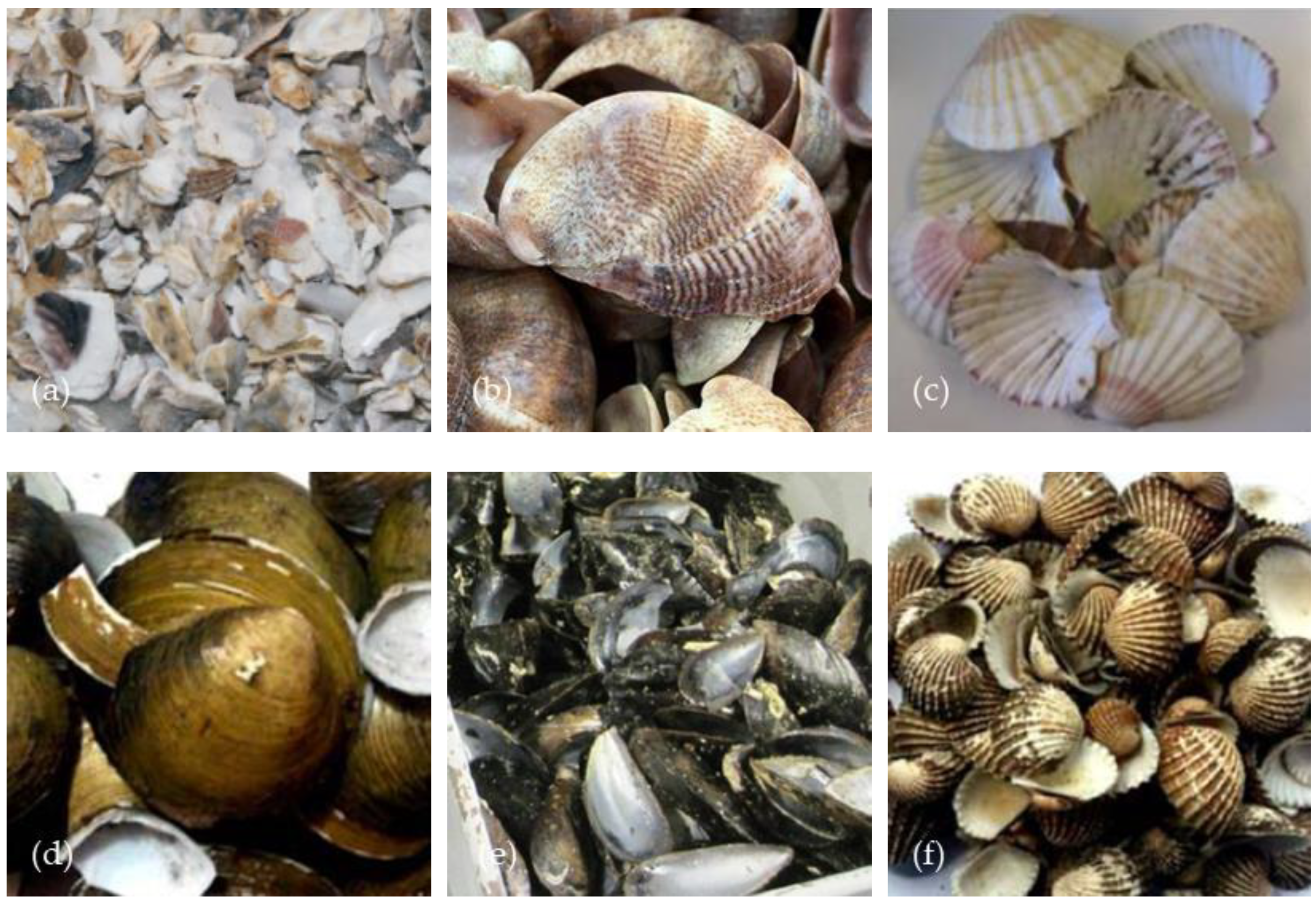

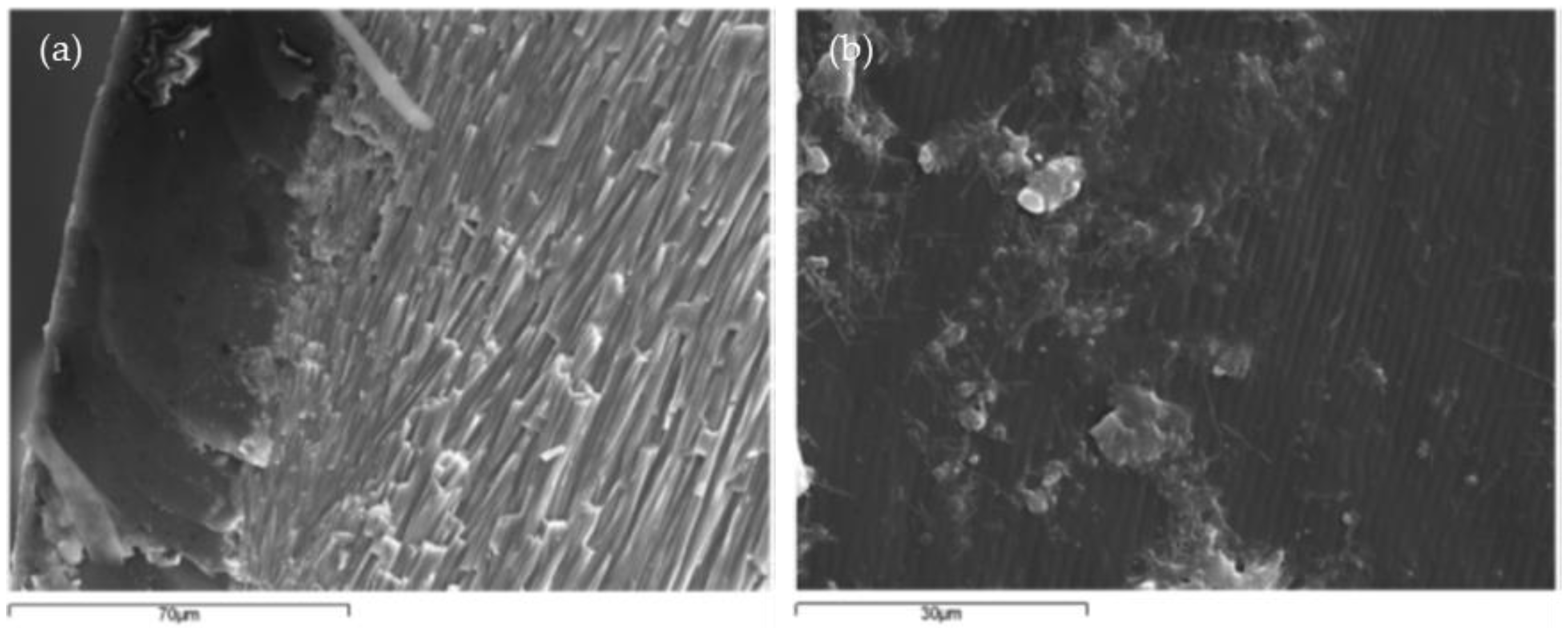


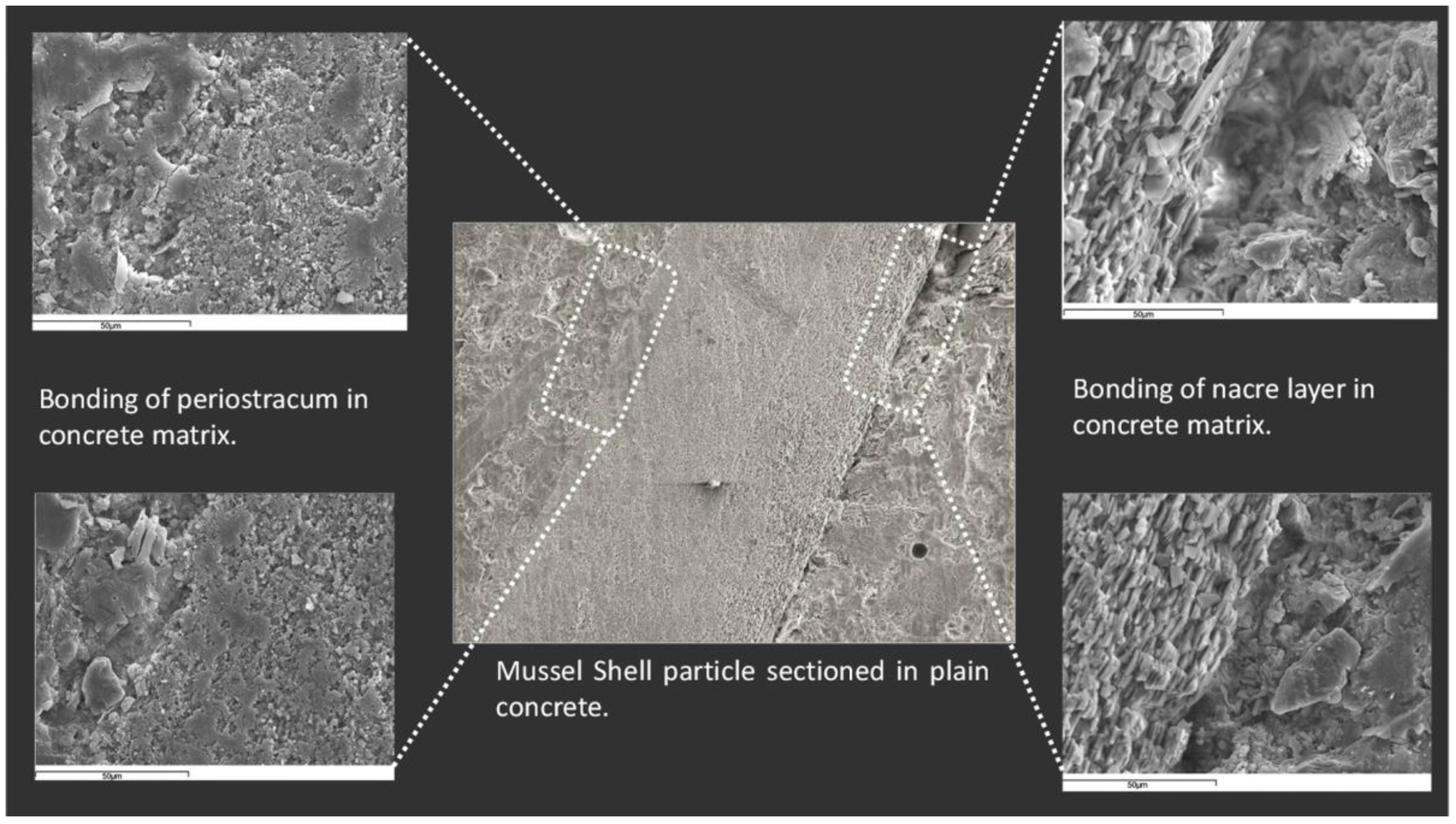

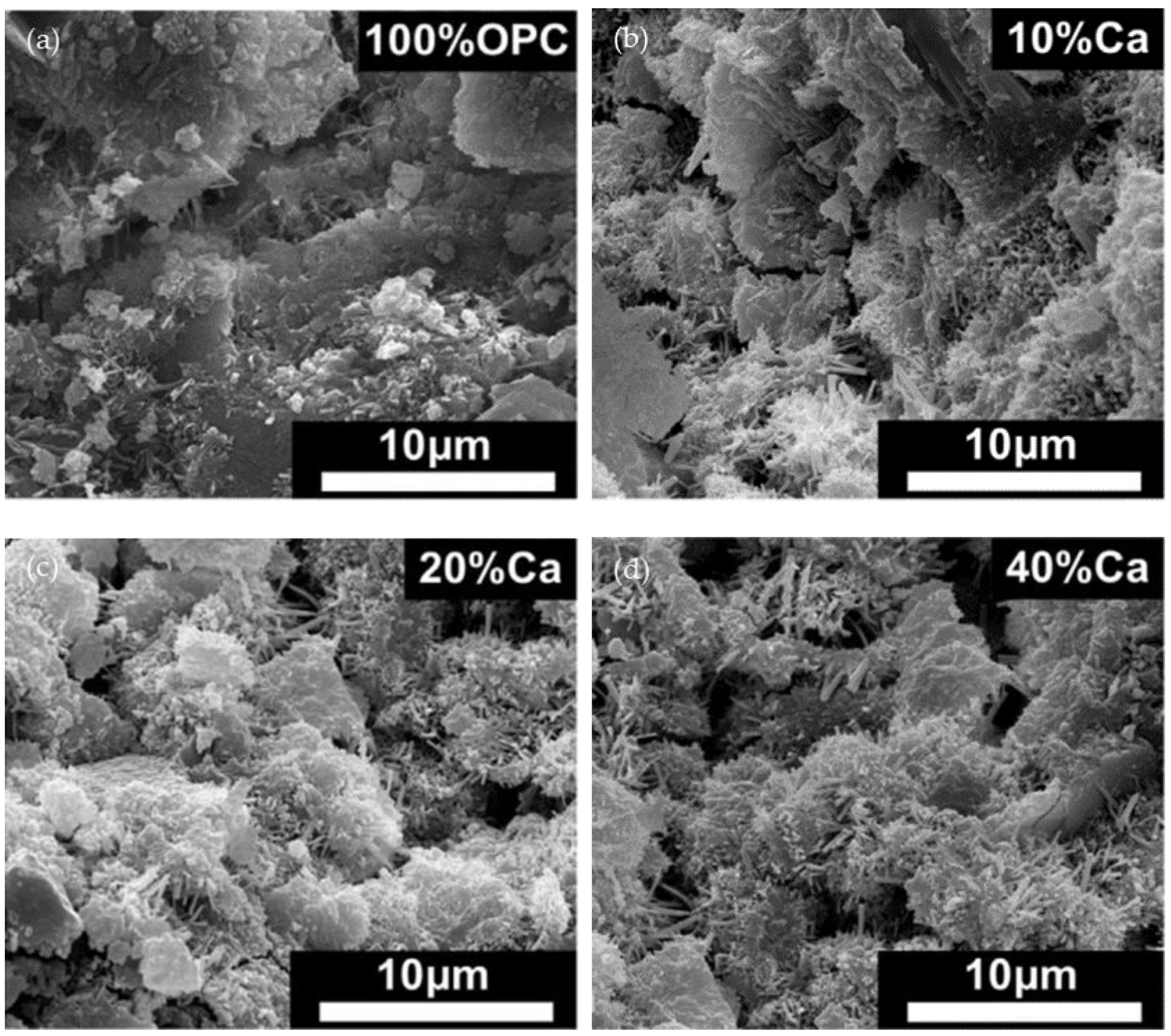




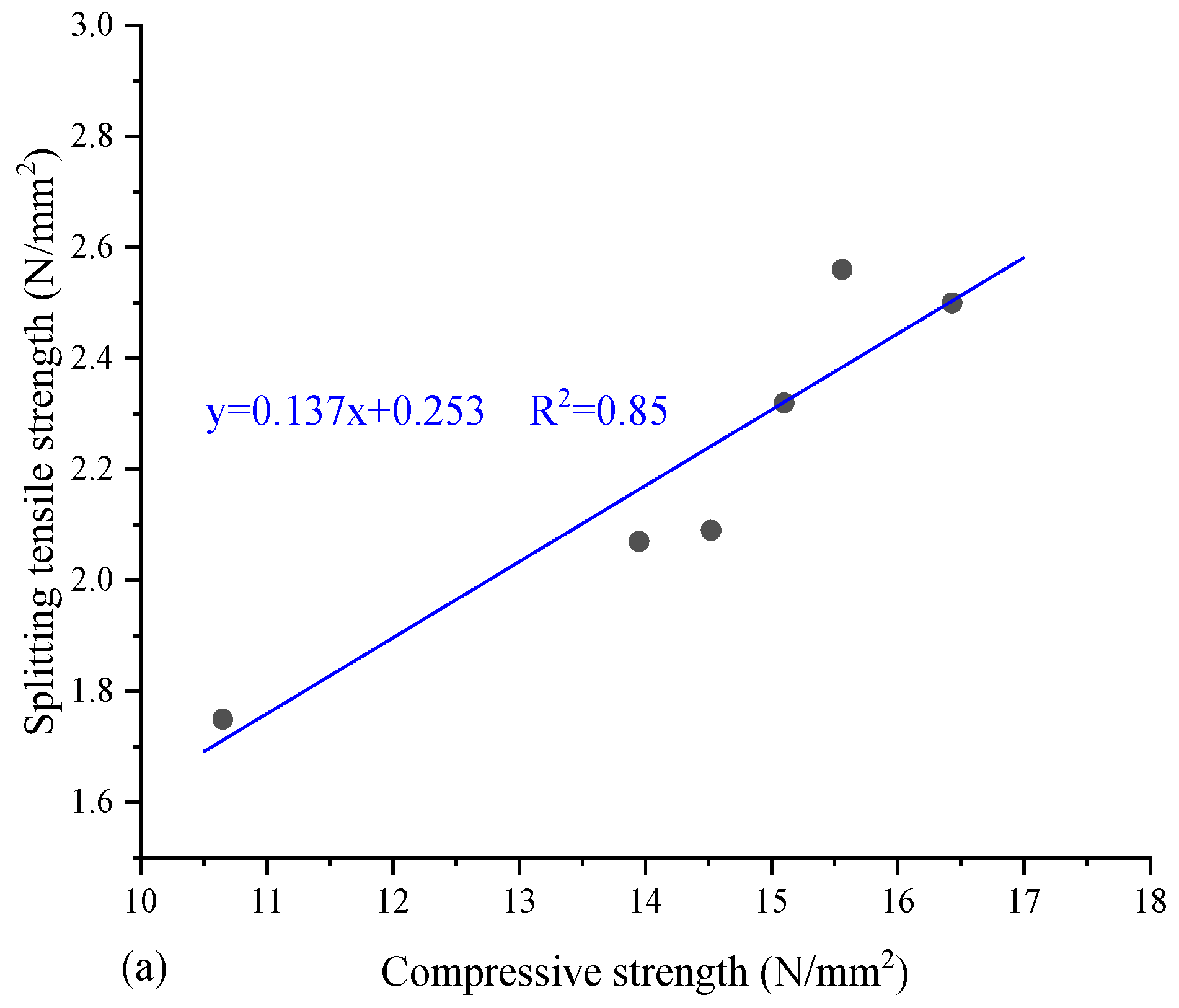
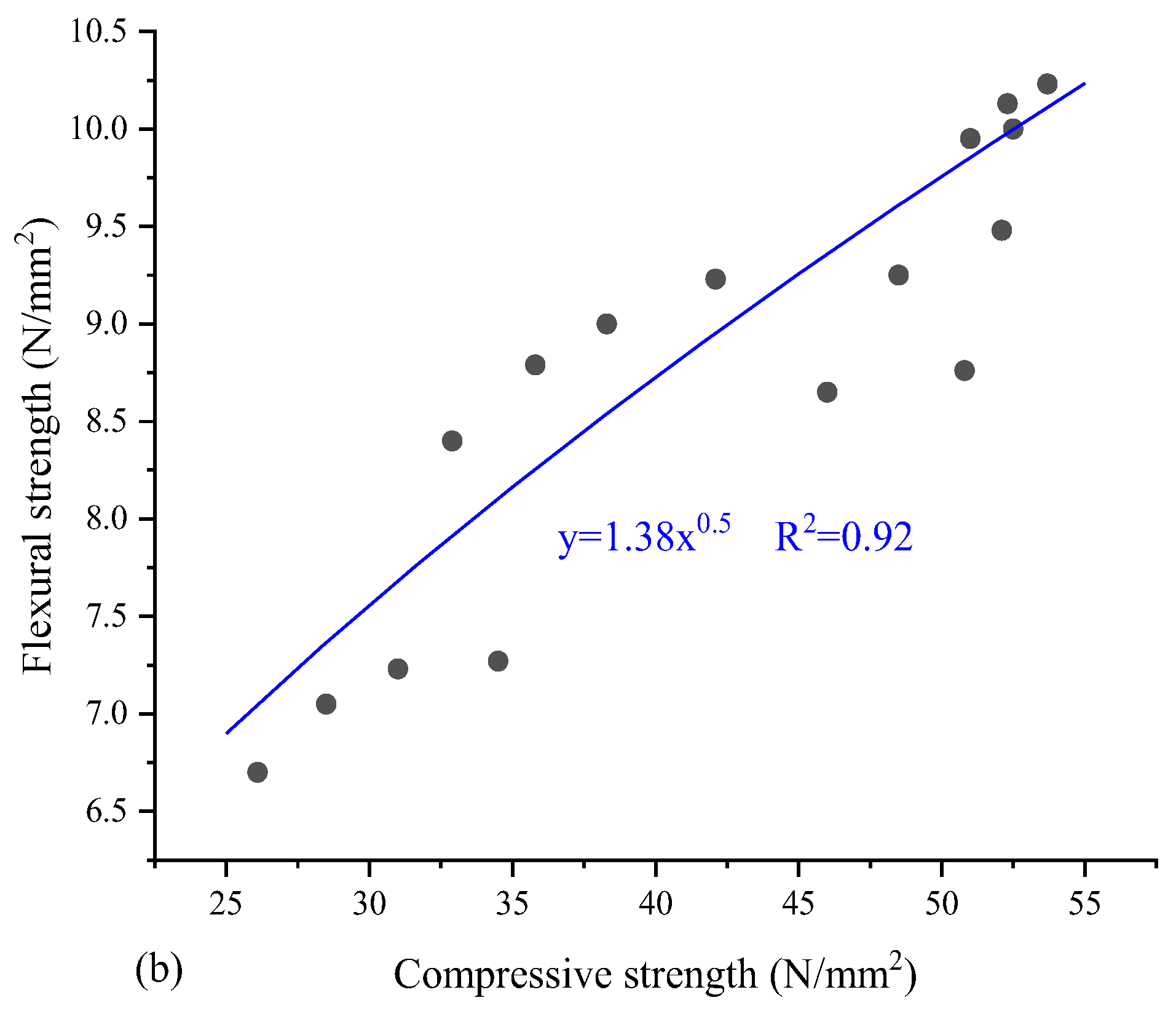
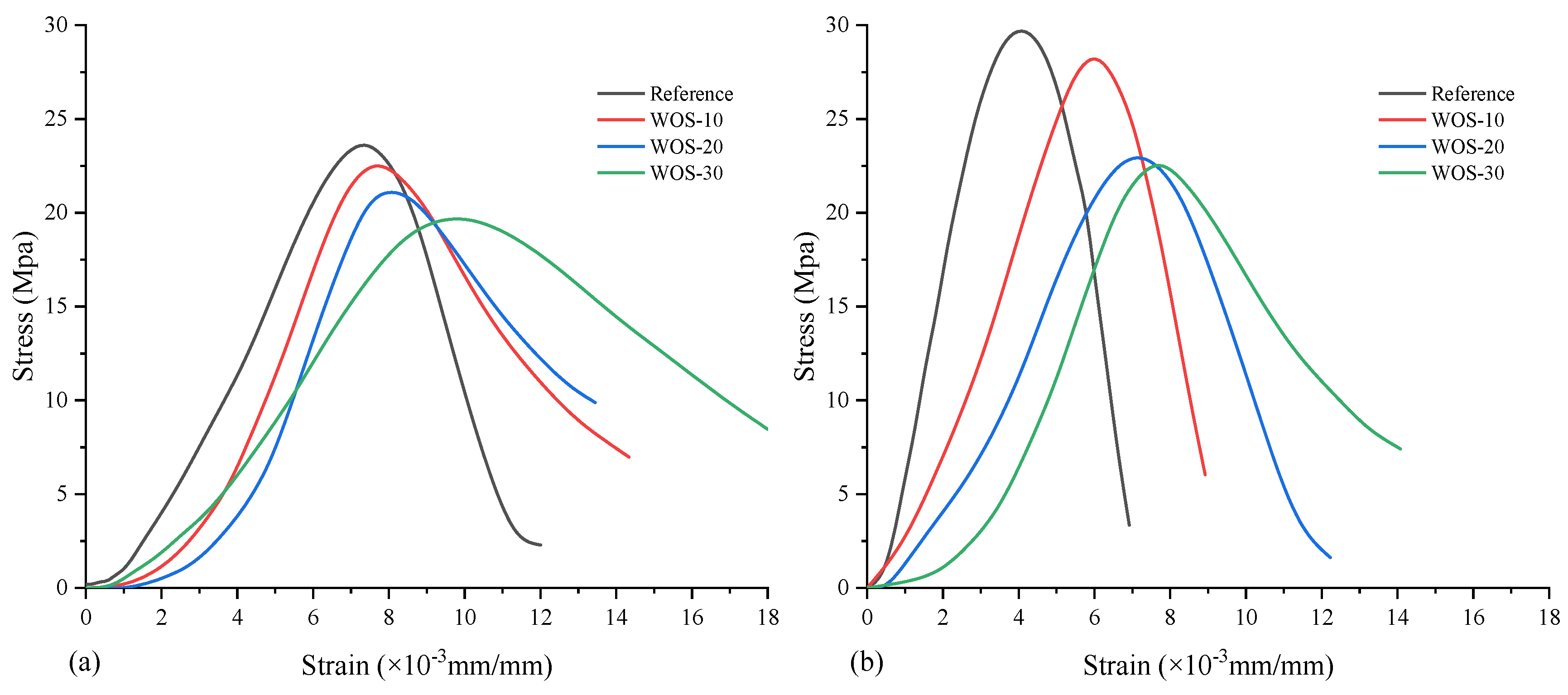

| No. | Keyword | Amount |
|---|---|---|
| 1 | Concrete | 322 |
| 2 | Cement | 266 |
| 3 | Compressive strength | 194 |
| 4 | Oyster shell | 185 |
| 5 | Strength | 162 |
| 6 | Fly ash | 125 |
| 7 | Fine aggregate | 111 |
| 8 | waste | 90 |
| 9 | Mechanical properties | 78 |
| 10 | Durability | 75 |
| Seashell Type | Literature | Size (mm) | Fineness Modulus | Specific Gravity | Water Absorption (%) |
|---|---|---|---|---|---|
| Oyster | Yang et al. [49] | <5 | 2.80 | 2.48 | 2.90 |
| Oyster | Kuo et al. [50] | <4.75 | 2.00 | 2.10 | 7.70 |
| Oyster | Islam et al. [51] | <2 | 2.27 | 2.29 | - |
| Oyster | Eo and Yi [23] | <5 | 1.85 | 2.59 | 1.61 |
| 25 | 7.68 | 2.67 | 0.40 | ||
| Oyster | Chen et al. [32] | <5 | 3.66 | - | 6.84 |
| Oyster | Chen et al. [33] | <5 | 3.72 | - | 8.87 |
| Scallop | Cuadrado-Rica et al. [41] | <5 | 4.40 | 2.64 | 3.65 |
| Mussel | Martínez-García et al. [20] | 0–1 | 1.90 | 2.73 | 4.12 |
| 1–4 | 4.64 | 2.65 | 2.56 | ||
| 4–16 | 5.38 | 2.62 | 2.17 | ||
| Cockle | Khankhaje et al. [24] | 4.75–6.3 | - | 2.64 | 2.50 |
| 6.3–9.5 | - | 2.09 | 1.80 |
| Seashell Type | Literature | CaCO3/CaO | SiO2 | Al2O3 | MgO | Fe2O3 | Na2O | K2O | SO3 | P2O5 | LOI |
|---|---|---|---|---|---|---|---|---|---|---|---|
| Raw shells | |||||||||||
| Seashell | Abinaya and Venkatesh [26] | 89.56 | 4.04 | 0.42 | 0.65 | - | 0.98 | - | 0.72 | 0.20 | - |
| River shell | 95.99 | 1.28 | 0.40 | 0.68 | - | 0.98 | - | 072 | 0.20 | - | |
| Oyster | Kong et al. [42] | 95.32 | 1.01 | 0.26 | 0.71 | 0.15 | 1.18 | - | 0.66 | - | - |
| Mussel | Figueroa et al. [56] | 96.9 | 1.30 | - | - | 0.50 | - | 0.40 | 0.30 | - | - |
| Cockle | Oh et al. [34] | 97.6 | 0.13 | 0.10 | 0.32 | 0.28 | 1.22 | 0.03 | 0.12 | - | - |
| After calcination | |||||||||||
| Oyster | Yang et al. [49] | 51.06 | 2.00 | 0.50 | 0.51 | 0.20 | 0.58 | 0.06 | 0.60 | 0.18 | 44.16 |
| Oyster | Jung et al. [57] | 53.81 | 0.40 | 0.22 | 0.70 | 0.04 | - | - | - | - | 44.87 |
| Scallop | Varhen et al. [58] | 53.70 | 0.10 | 0.10 | 0.18 | 0.03 | 0.50 | 0.01 | 0.32 | - | 44.4 |
| Mussel | Jung et al. [57] | 53.70 | 0.20 | 0.13 | 0.33 | 0.03 | - | - | - | - | 45.61 |
| Mussel | Felipe-Sese et al. [27] | 87.21 | 0.55 | 0.03 | 0.49 | 0.05 | 0.50 | 0.04 | - | 0.09 | - |
| Cockle | Olivia et al. [59] | 51.56 | 1.60 | 0.92 | 1.43 | - | 0.08 | 0.06 | - | - | 41.84 |
| Cockle | Olivia et al. [21] | 51.91 | 0.38 | 0.65 | - | 0.05 | - | - | - | - | - |
| Clam | Jung et al. [57] | 53.92 | 0.46 | 0.20 | 0.22 | 0.04 | - | - | - | - | 45.16 |
| Clam | Olivia et al. [21] | 67.70 | 0.39 | 0.28 | - | 0.02 | - | - | - | - | - |
| Periwinkle | Etuk et al. [60] | 55.53 | 26.26 | 8.79 | 0.40 | 4.82 | 0.25 | 0.20 | 0.18 | 0.05 | - |
| Periwinkle | Umoh and Ujene [61] | 52.10 | 27.20 | 6.42 | 0.82 | 4.64 | 0.26 | 0.25 | 0.26 | - | - |
| Snail | Zaid and Ghorpade [62] | 51.09 | 0.60 | 0.51 | 0.69 | 0.56 | 1.20 | 0.12 | 0.19 | 0.21 | 40.54 |
| Cardiidae | Soltanzadeh et al. [63] | 52.34 | 3.65 | 1.15 | 0.42 | 0.20 | 0.35 | 0.13 | 0.47 | - | 41.25 |
| Seashell Type | Literature | Mixture Type | Replaced Material | w/c | Percentage (%) | Desin Mix |
|---|---|---|---|---|---|---|
| Oyster | Liao et al. [40] | mortar | Fine aggregate | 0.45 | 10, 20, 30 | 1:2.5 |
| Oyster | Liu et al. [47] | mortar | Fine aggregate | 0.45 | 20 | 1:2.5 |
| Mussel | Martínez-García et al. [29] | mortar | Fine aggregate | 1.77 (by volume) | 25, 50, 75 (by volume) | - |
| Mussel | Martínez-García et al. [64] | mortar | Fine aggregate | 0.64 | 25, 50, 75 | 1:2.02 |
| Cockle | Edalat-Behbahani et al. [75] | mortar | Fine aggregate | 0.45 0.4 | 30 | 1:4.5 1:2.5 |
| Cockle | Khankhaje et al. [24] | concrete | Coarse aggregate | 0.32 | 25, 50, 70 | 1:0.41:3.93 |
| Cockle | Muthusamy and Sabri [76] | concrete | Coarse aggregate | 0.5 | 5, 10, 15, 20, 25, 30 | - |
| Cockle | Olivia et al. [66] | mortar | Cement | 0.55 | 4 | 1:2.75 |
| Cockle | Othman et al. [74] | concrete | Cement | 0.54 | 5, 10, 15, 25, 50 | 1:2.5:1.35 |
| Periwinkle | Falade [53] | concrete | Coarse aggregate | 0.55 0.6 0.8 | 10, 20, 30, 40, 50 | 1:1.5:3 1:2:4 1:3:6 |
| Not specified | Ahsan et al. [77] | concrete | Fine aggregate | 0.35 | 10, 20, 30 | 1:1.35:2.8 |
| Not specified | Sangeetha et al. [78] | concrete | Cement Coarse aggregate | 0.5 | 5, 10, 15 10, 20, 30 | 1:1.6:3.4 |
| Not specified | Hasan et al. [67] | mortar | Cement | 0.49 | 5, 10, 15, 20, 25, 30 | 1:2.54 |
| Literature | Replaced Material | Replacement Level | Degree of Impact |
|---|---|---|---|
| Liao et al. [40] | Fine aggregate | 10% | −25% |
| 20% | −32.5% | ||
| 30% | −36.1% | ||
| Adewuyi et al. [84] | Coarse aggregate | 25% | −26.7% |
| 50% | −46.7% | ||
| 75% | −66.7% | ||
| Hazurina et al. [68] | Cement | 5% | −33.7% |
| 10% | −66.7% | ||
| 15% | −88.7% |
| Literature | Replaced Material | Replacement Level | Degree of Impact | |
|---|---|---|---|---|
| Initial | Final | |||
| Wang et al. [89] | Fine aggregate | 5% | +10.8% | +29.7% |
| 10% | +23.9% | +49.4% | ||
| 20% | +34.7% | +61.3% | ||
| 30% | +49.7% | +76.5% | ||
| Lertwattanaruk et al. [25] | Cement | 5% | +1.7% | +1.1% |
| 10% | +6.9% | +2.2% | ||
| 15% | +8.6% | +6.7% | ||
| 20% | +10.3% | +13.3% | ||
| Hazurina et al. [68] | Cement | 5% | +66.7% | +19.1% |
| 10% | +100.0% | +28.6% | ||
| 15% | +100.0% | +38.1% | ||
| 25% | +111.1% | +47.6% | ||
| 50% | +122.2% | +61.9% | ||
| Literature | Replaced Material | Replacement Level | Degree of Impact |
|---|---|---|---|
| Cuadrado-Rica et al. [41] | Fine aggregate | 20% | −1.67% |
| 40% | −6.69% | ||
| 60% | −6.95% | ||
| Chen et al. [33] | Fine aggregate | 10% | −0.24% |
| 20% | −0.95% | ||
| 30% | −1.43% | ||
| Ez-zaki et al. [55] | Cement | 8% | −0.21% |
| 16% | −1.23% | ||
| 33% | −2.21% |
| Mix | CO2 Emissions (kg CO2/m3) | Total CO2 Emissions (kg CO2/m3) | |||||
|---|---|---|---|---|---|---|---|
| Cement | Metakaolin | River Sand | Oyster Shells | SP | Water | ||
| Control | 419.70 | 3.65 | 4.56 | 0 | 1.13 | 0 | 429.04 |
| WOSP-10 | 419.70 | 3.65 | 4.11 | 0.30 | 1.13 | 0 | 428.89 |
| WOSP-20 | 419.70 | 3.65 | 3.66 | 0.60 | 1.13 | 0 | 428.74 |
| WOSP-30 | 419.70 | 3.65 | 3.21 | 0.90 | 1.13 | 0 | 428.59 |
| Cement | River Sand | Oyster Shells | Superplasticizer | Water | |
|---|---|---|---|---|---|
| Unit cost (USD/kg) | 0.074 | 0.031 | 0.019 | 1.07 | 0.00055 |
| Mix | Raw Material Cost (USD/m3) | Total Material Cost (USD/m3) | ||||
|---|---|---|---|---|---|---|
| Cement | River Sand | Oyster Shells | Superplasticizer | Water | ||
| Reference | 44.83 | 46.60 | 0.00 | 1.95 | 0.15 | 93.53 |
| WOS-10 | 44.83 | 41.94 | 2.87 | 1.95 | 0.15 | 91.74 |
| WOS-20 | 44.83 | 37.28 | 5.74 | 1.95 | 0.15 | 89.95 |
| WOS-30 | 44.83 | 32.62 | 8.60 | 1.95 | 0.15 | 88.15 |
Disclaimer/Publisher’s Note: The statements, opinions and data contained in all publications are solely those of the individual author(s) and contributor(s) and not of MDPI and/or the editor(s). MDPI and/or the editor(s) disclaim responsibility for any injury to people or property resulting from any ideas, methods, instructions or products referred to in the content. |
© 2024 by the authors. Licensee MDPI, Basel, Switzerland. This article is an open access article distributed under the terms and conditions of the Creative Commons Attribution (CC BY) license (https://creativecommons.org/licenses/by/4.0/).
Share and Cite
Zhu, Y.; Chen, D.; Yu, X.; Liu, R.; Liao, Y. Properties of Cementitious Materials Utilizing Seashells as Aggregate or Cement: Prospects and Challenges. Materials 2024, 17, 1222. https://doi.org/10.3390/ma17051222
Zhu Y, Chen D, Yu X, Liu R, Liao Y. Properties of Cementitious Materials Utilizing Seashells as Aggregate or Cement: Prospects and Challenges. Materials. 2024; 17(5):1222. https://doi.org/10.3390/ma17051222
Chicago/Turabian StyleZhu, Yunpeng, Da Chen, Xiaotong Yu, Ruiwen Liu, and Yingdi Liao. 2024. "Properties of Cementitious Materials Utilizing Seashells as Aggregate or Cement: Prospects and Challenges" Materials 17, no. 5: 1222. https://doi.org/10.3390/ma17051222
APA StyleZhu, Y., Chen, D., Yu, X., Liu, R., & Liao, Y. (2024). Properties of Cementitious Materials Utilizing Seashells as Aggregate or Cement: Prospects and Challenges. Materials, 17(5), 1222. https://doi.org/10.3390/ma17051222





